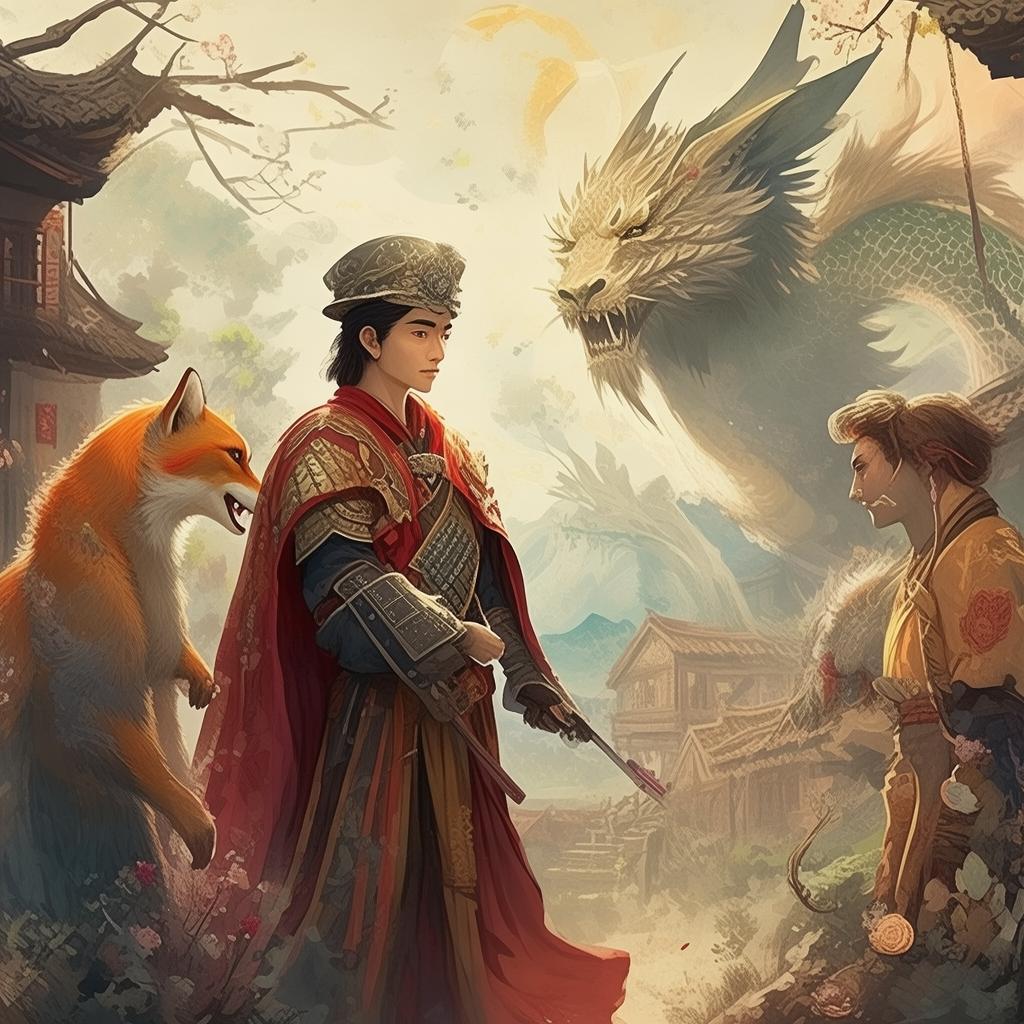The Willow Whisperer
In the heart of a tranquil village nestled between rolling hills and a meandering river, there stood a willow tree that had been a silent witness to many a story. It was an ancient tree, its branches heavy with the weight of time, its leaves whispering tales of yesteryears. The villagers spoke of it as the Willow Whisperer, a tree imbued with the power to reveal hidden truths.
The story begins in the spring, a time when the willow's branches burst into a vibrant green, and the air is filled with the sweet scent of blossoming flowers. The village was preparing for the annual Spring Festival, a time when the community came together to celebrate the renewal of life. Yet, amidst the excitement, there was a somber mood. The willow tree, which had been a symbol of life and hope for generations, was dying. Its leaves were turning yellow, its branches drooping.
In the midst of this sadness, a young woman named Liangmei arrived in the village. She had heard tales of the Willow Whisperer and had come seeking answers to a mystery that had haunted her since childhood. Her mother had died under mysterious circumstances, and Liangmei had always suspected that the village's past was intertwined with her mother's fate.
Liangmei spent days by the willow's side, listening to the soft rustling of its leaves. She felt a strange connection to the tree, as if it were speaking to her in hushed tones. One evening, as the sun dipped below the horizon, the willow seemed to stir. Its leaves whispered a lullaby, a melody that carried the weight of centuries.

Liangmei followed the melody to the riverbank, where she found an old, weathered book buried in the sand. The book was filled with tales of a forbidden love between a young villager named Feng and a maiden named Yulan. They had been star-crossed lovers, separated by the villagers' superstitions and the willow's curse.
As Liangmei read the book, she realized that her mother had been Yulan, and Feng her father. The curse had been lifted long ago, but the villagers had forgotten its lifting. The willow had been punished for its role in the lovers' tragedy, and only by revealing the truth could the curse be broken.
Determined to set things right, Liangmei approached the village elder, a man who had witnessed the lovers' last moments. The elder was reluctant to believe her story, but Liangmei's resolve was unwavering. She shared the book's contents, and the elder, moved by the tale, agreed to help.
Together, they gathered the villagers and revealed the truth. The willow was no longer cursed, and its leaves began to turn green once more. Liangmei's mother's spirit was finally at peace, and Liangmei felt a sense of closure.
The Spring Festival was a grand celebration that year, and the willow tree stood tall, its branches heavy with the weight of hope. The villagers, now united in understanding and forgiveness, danced and sang under its boughs, their hearts filled with gratitude for the lessons of the past.
In the end, the Willow Whisperer's lullaby had not only brought redemption to Liangmei's family but had also brought healing to the village. The tree, once a symbol of sorrow, had become a beacon of hope, reminding the villagers of the power of love, truth, and forgiveness.
As the story unfolded, the villagers realized that the willow had been a part of their lives, a silent guardian, always there, watching over them. And so, the legend of the Willow Whisperer was reborn, not as a tale of sorrow, but as a story of redemption and renewal.
✨ Original Statement ✨
All articles published on this website (including but not limited to text, images, videos, and other content) are original or authorized for reposting and are protected by relevant laws. Without the explicit written permission of this website, no individual or organization may copy, modify, repost, or use the content for commercial purposes.
If you need to quote or cooperate, please contact this site for authorization. We reserve the right to pursue legal responsibility for any unauthorized use.
Hereby declared.









